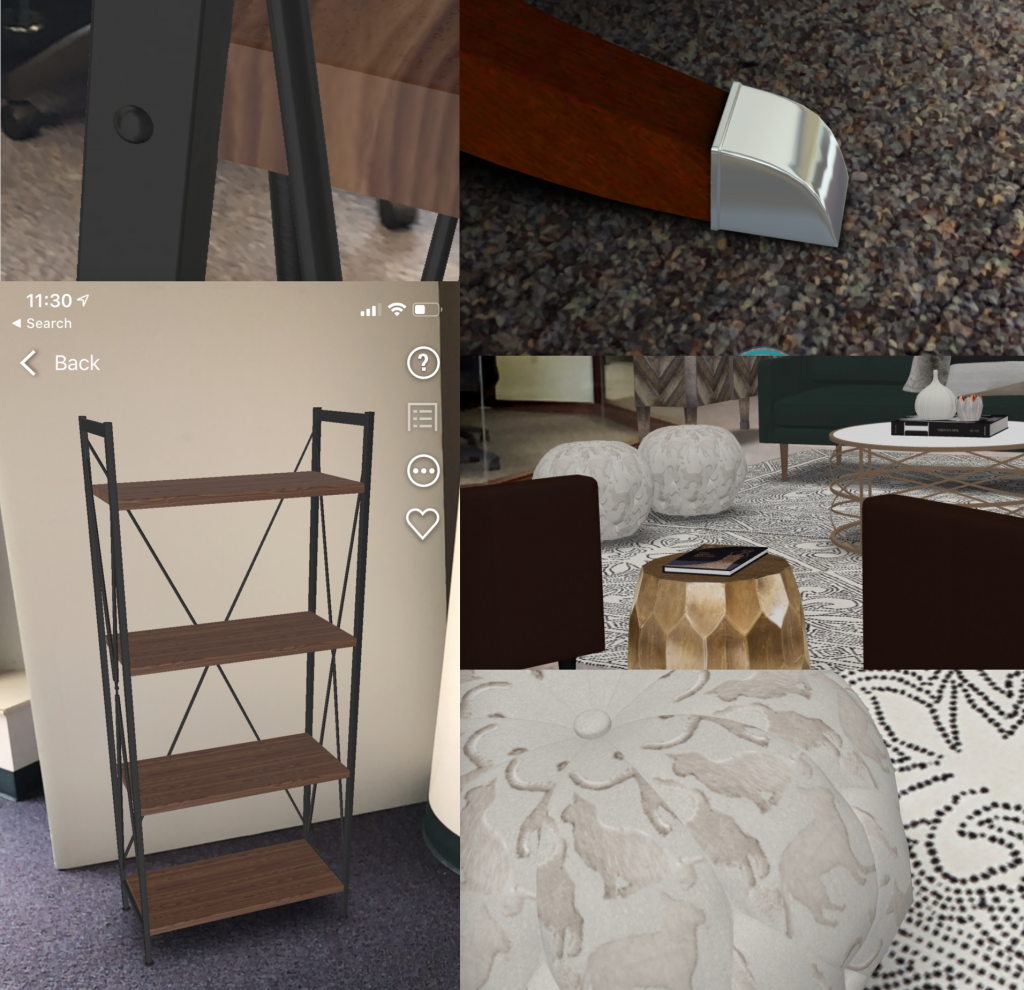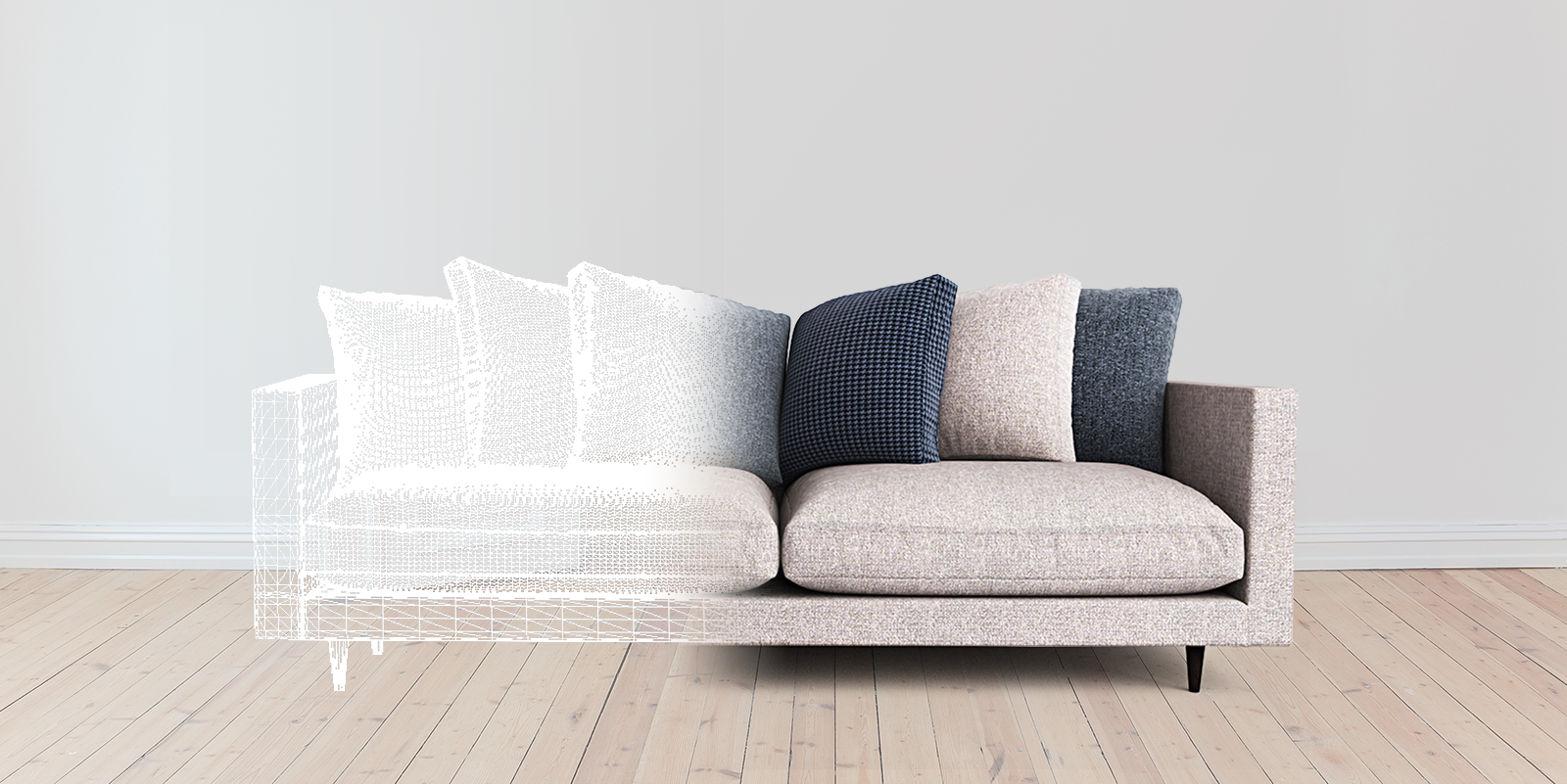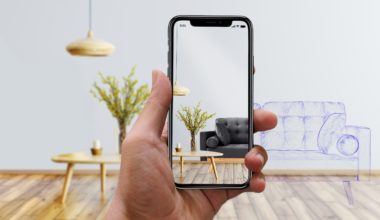Why manufacturers need to take a serious look at Augmented Reality
AR helps customers make purchase decisions for complex products—here are many reasons why AR can make the dreaming, planning, selecting, and buying experiences much more powerful.
For over 20 years, we’ve been helping building product manufacturers deliver customer-focused digital experiences that give people the confidence to buy high-value, complex products. Beyond images and 360° spins in a product catalog, we’ve employed 2D image-layering solutions to build photo-like visualizers and configurators designed to help people see their vision come to life while dreaming, planning, and selecting.
While 3D technologies have always held the promise of unlocking more engagement with people, for many years the cost and complexity to get to the level of realism that people expect made these solutions out of reach for most manufacturers. We even did our first experiments with Augmented Reality over a decade ago.
Technology has finally caught up. Now is the right time for manufacturers to embrace immersive 3D-based experiences for their products. Read on to understand the value AR can bring and how to get started.
AR has proved its value for eCommerce (beyond a marketing novelty)
Today, there are an estimated 80-100 million active users of AR in some form, and 1 billion AR-compatible smartphones in people’s hands. It’s no longer a question of waiting for the technology to catch up to deliver useful experiences.
Thanks to Apple’s ARKit and Google’s ARCore, developers have standard frameworks to build on, so device owners can experience AR with no special effort. There’s massive innovation going on by thousands of developers, and more immersive and engaging features are continuously being released.
Are you one of the 75 percent of Snapchat’s 186 million daily users who play with AR Lenses each day? Snapchat is extending its shoppable lenses, and Facebook is ramping up their News Feed AR ads right now.
For more in-depth shopping, perhaps you’ve used the Houzz app’s AR capability for furniture or home accessories. By September 2017 they had over 500,000 products you could try in your room. Or maybe you’ve used apps from Ikea or Pottery Barn. Even Amazon’s app has AR-enabled products, proving that the list of early adopters is long.
And as for shopping, AR is proving very valuable in the home improvement space. Why? AR gives people a more meaningful ability to visually connect to things they are considering for their home, clothing, or accessories to wear, or even makeup. Houzz CEO Adi Tatarko even said in 2018 that since the introduction of the “View in My Room” AR feature, over 2 million people had used it, and that users of AR were 11 times more likely to make purchases on the website. According to a recent study from BRP, nearly 48% of consumers said they are more likely to shop at a retailer who uses augmented reality.
Here’s why Augmented Reality adds so much more value throughout the whole shopping journey
In order for retailers to provide AR in their eCommerce sites, they need the 3D assets from manufacturers. But your investment could have a much wider reach.
AR opens the door to a more immersive journey — with solutions for dreaming, planning, configuring, and selecting.
This is especially true for complex products like furniture, large and small appliances, doors and windows, faucets, sinks, toilets, showers/tubs, decorating accessories, millwork and trim, countertops, wallpaper, wood flooring, carpeting, automotive add-ons and accessories, clothing, jewelry, and more.
Consider all these potential barriers to purchase:
- Infrequent purchases and low awareness of the latest and greatest (many people don’t know where to begin)
- A high cost to purchase (including delivery and installation)
- Lots of custom options, varying sizes, or even groups of options (many decisions before purchase)
- Many stylistic/aesthetic choices (finding something I like, or what goes with my look)
- Difficulty/concerns about installation or repair (know what you’re getting into)
Here’s how AR helps mitigate barriers to purchase
✅ Understanding size and relationship to other real and virtual products
AR helps set accurate expectations in many ways, specifically because items can be placed into a room at actual size. Many highly-configurable products change in size and form and need to fit a given space, and might need to work together with existing things you might own.


✅ Putting things right where you want them
People can spend time with the things they don’t yet own, and better imagine them in their lives. You can move things around and then walk around them. The immersive experience is powerful, even through the screen of your phone.
✅ Evaluating aesthetic choices
AR can support amazingly detailed textures and patterns, transparency, shine, and shadows. Virtual objects can look amazing up close and far away, and blend into the lighting of a room.
People want things to look nice, but they also want to see how they go with the style of things they already own. AR can reduce the desire to order a lot of samples online and wait for them to arrive, or make a visit to the store just to see what is there.

✅ Seeing any angle, any detail
You can step back and view the bookshelf from a distance, or you can get right up to see the details. People who want details can have greater confidence in purchase decisions, without having to visit a physical store.

✅ Interacting and learning with animations
Before a big purchase, people can interact and understand how something works, how it opens/closes, how it changes in size, or even go step-by-step through how it is assembled, installed, or repaired.
Demonstrating functionality in this way can show people that the product will meet their expectations, and leads to greater product satisfaction down the line, especially if they already feel comfortable getting the product set up.
Here’s what you need to do to get started with an Augmented Reality strategy
Like anything taken at scale, deciding to add Augmented Reality to your digital customer experiences is complex. Today there are already a lot of best practices, so you won’t be breaking new ground, but there are a lot of variables involved in understanding the full scope of what is needed today, and for the future.
Taking a handful of products and sticking them into a simple AR player might be an exciting demo, but it really won’t help your business understand what it will take to be up and running.
So let me give you two areas you can begin to think about as you consider making AR an integral part of your marketing strategy.
Think of it as gathering the details needed to brainstorm solutions to your problems. And then reach out to us, we’d be happy to give you some specific ideas and advice for your situation.
First, understand what you want to achieve, and what your customers need
Think about the gaps you have in helping customers buy. AR is not a novelty and should be planned with specific intent, which means knowing what problems you want to solve.
- Think about all the things your customers want to do in the buying journey, and the best of what you offer today.
- Take a look at your competitors and what they provide.
- Think about the dealer, professional, and retail experiences that customers have.
Your needs won’t be the same as everyone else.
- You may have a greater need around helping people understand installation or assembly.
- Or you may have trouble showing people valuable product options, or touting unique features.
- You might be spending too much, or relying too much on samples.
- You might really need a helpful showroom experience, or a tool to help professionals sell your products, vs. catalogs and limited samples in the shop.
Also be aware of the shortcomings of your current digital customer experience. AR experiences will be successful when you help people easily condense their choices and evaluate more limited options, not just attach products to a cumbersome, massive product catalog.
- Powerful pairings with AR: A step-by-step guided experience, a catalog with recommended options for different lifestyle needs, or design style filters — help people get to meaningful options (important even without AR)
- It’s tiring to hold out your phone for a long time, so you don’t want people to have to use a search engine or do complex filtering.
Second, do a high-level assessment of your assets
3D assets can be so much better than 2D-photo assets. They are more adaptable — and can be scaled and sized in different ways. If your current marketing solution is to construct entire room sets to put your physical products in, you’ve already been thinking about 3D. Most companies we work with have some form of 3D product data available, but often it’s not equally managed, or locked up in engineering.
So, the first step is to figure out what you have available, and what you don’t. Do an inventory against your product catalog, compile file samples for simple and complex products, and have a discussion with your product development team. Many products share common base shapes.
Also consider any texture photography you have, and if you have detailed scans or complete repeats of complex textures.
What to expect later:
Transitioning to a product asset strategy that involves the management of 3D assets doesn’t have to be complex, but there are a lot of details. When done properly, you’ll unlock capabilities not just for AR, but for replacement of your existing catalog images, at nearly any scale, with photorealistic details — you’ll want your models to be developed correctly.
And there are many approaches to making 3D assets — which might involve drawing from scratch, laser-scanning small products, or creating 3D from 360° of photos for very large products. Making repeating tiles for all the material options has to be considered as well.
Reach out for more information
Hopefully this article has given you a greater understanding of the incredible value of Augmented Reality in solving many of the issues people have with making important purchases.
So you’re aware, we’ve been developing an efficient pipeline that builds on our decades of experience with massive, complex product catalogs, unstructured data, and visualization solutions. And there are some amazing experiences on the horizon.
We’re building some 3D solutions that go a lot further than AR, but use the same source assets. One you can see today is Oneida Foodservice’s Plate Envy, a tool that uses full-screen, photorealistic, real-time, server-side 3D rendering to help restaurateurs select the perfect tabletop items for their unique restaurants.
We’d love to give you the details of how this works behind the scenes. Contact us if you’d like to see it!
For a primer on how Augmented Reality does its thing, check out this article: MOBILE VISION, PART 2: AUGMENTED REALITY
https://blog.hansoninc.com/mobile-vision-part-2-augmented-reality/
And for iOS, download and try our Hanson Vision demonstration application at: https://apple.co/2sz49zl




